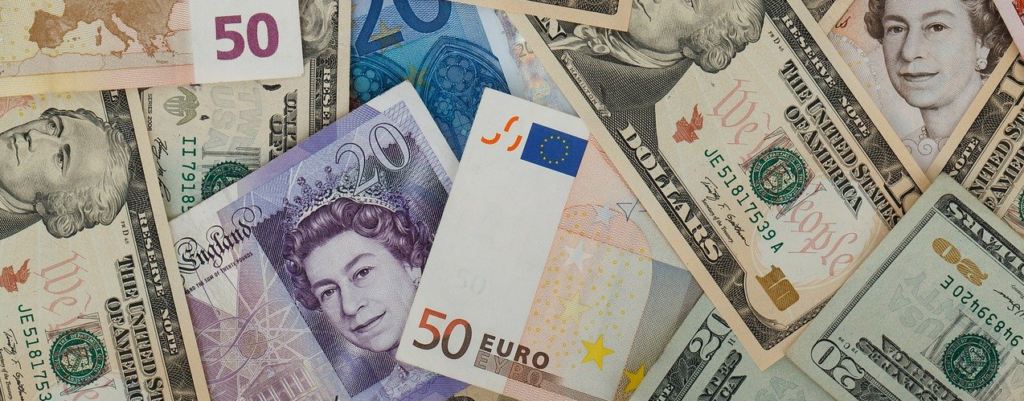This article is regularly updated and continues to be expanded. Last updated 19 September 2021.
Welcome to our comprehensive article detailing virtually every conceivable investment opportunity available to you. We’ll explain what to invest in now with £10,000 or more.
‘What to invest in now’ is not financial advice, because financial advice must be tailored to your personal circumstances and provided by a regulated professional. If you’re interested in receiving advice on what to invest in now by a qualified firm of advisers, please visit our impartial guide.
It’s also worth explaining that we do not recommend investing in every investment opportunity on this list. It is best to think of it as an encyclopedia of investing. Some of the investments in this article are sound investments that are suitable for most investors. Others are only suitable for wealthy individuals with oodles of risk tolerance.
We encourage you to use this list of what to invest in as a source of inspiration and a jump-off point for further research. To help you, we’ll link to our Financial Expert guides on each investment topic as we run down the list.

Your guide to what to invest in now
We’ve sorted the world of investment opportunities by level of risk. The article begins with lower-risk asset classes and concludes with the riskiest and illiquid (i.e. difficult to sell) investments available.
Of course, risk and return have a tight relationship in financial markets. This means that the investments at the start of this list will offer modest returns on your cash whereas the investments at the end could return double-digit percentage growth.

Bank & building society saving bonds
A savings bond is a bank account that pays a fixed rate of interest over a specified period. You cannot touch your deposit during the bond period without incurring a penalty charge or a reduction in the interest rate.
For this reason, we consider savings bonds as a type of investment because it requires you to plan ahead and commit your cash, just like any other investment.
If you choose to bank with a regulated UK bank or building society then you will protection from the Financial Services Compensation Scheme (FSCS) which assures the first £85,000 of savers deposits in the event a bank goes bust. Read more about the scheme, and its limits here.
What to invest in – the appeal of savings bonds
Savings bonds are used by millions of brits to stash away cash with relative security and earn a better rate of interest than a current account. Right now, savings bonds pay paltry sounding interest rates which rarely top 2%. However, this is still a huge improvement over current accounts which tend to pay close to 0%.

National Savings & Investments
National Savings & Investments, better known as ‘NS&I’ is a unique financial institution. Being a publicly owned institution, any qualifying savings made with NS&I are fully guaranteed by the government. This is known as their 100% security guarantee.
Furthermore, most NS&I savings products are also tax-free. It is rare for any savings product to feature tax protection unless it is an ISA, such as a Cash ISA, Cash Lifetime ISA, or Cash Help to Buy ISA
This level of security cannot be found among any other UK financial institutions. Other banks are ultimately private corporations and therefore could conceivably become insolvent. The £85,000 FSCS scheme provides a degree of protection although as a wealth cash saver, you would need to split your savings across many different banking groups to maximise the protection available.
One of the most popular NS&I products is their unusual offering called Premium Bonds. Premium bonds are zero-interest savings accounts that pay out occasional cash prizes from a random draw instead. NS&I pays money into the pool equivalent to 1% of all savings in the scheme. This fund is used to fund over 3 million prizes per month, which can range from £25 to a top prize of £1 million!
The more you save, the more entries you will receive into the prize draw, as each £1 deposited into your account earns you an additional entry. You can only save a maximum of £50,000 in the account.
This cap is presumably designed to prevent ultra-wealthy individuals from taking advantage of the government-backed protection and claiming the lions share of all prizes.
What to invest in – will you get lucky with NS&I?
NS&I has seen a resurgence in popularity recently owing to the low rates of interest available elsewhere. NS&I products have rarely topped the league tables for interest rates. However, the tax-free status of most of their savings products, and the thrill factor of potentially winning big on Premium Bonds have tempted many savers over in recent years.

Government bonds
You will often hear about the UK national debt, or more specifically the UK government’s borrowings. This debt was accumulated through successive governments spending slightly more than they collected in tax revenue over the last century.
The UK government has over £2 trillion in debt. This mostly takes the form of ‘gilts’ which are bonds issued by the UK government. Some government bonds are perpetual, but most have a maturity date, such as 2047.
Due to its long track record, HM Treasury commands the respect and faith of investors. UK government bonds are among the safest investments available in the world, as the UK has never defaulted on its debt.
As a retail investor, you can invest in UK government bonds through funds; the easy name for a variety of collective investment schemes. A fund takes your investment, pools it with thousands of other investors and invests it across a portfolio of assets.
Government bond funds provide investors with a convenient way to invest in a diversified collection of government bonds. Some funds build a geographically diverse portfolio, whereas others invest in a wide variety of maturity dates.
As well as interest payments, you will also experience increases or decreases in the market value of the bonds held by the fund. This is because government bonds are financial assets that are traded on exchanges and therefore fluctuate in price.
As a rule, bonds with a maturity date further in the distance (known as ‘long-dated’ bonds) are more volatile in price than short-dated bonds. This is because a higher proportion of the total value of the bond (i.e. its future interest payments and principal) are further in the future. Small changes in expectations about the relative value of those payments (and safety) can extrapolate into large swings in value over decades and decades.
In contrast, a UK government bond due to be repaid in 2 years time will be very insensitive to news and current affairs, as the value of the bond is derived from only a few cash payments all within the near term.
Examples of funds that allow investors to invest in UK government debt include:
- Vanguard U.K. Gilt UCITS ETF (VGOV) – This is an exchange-traded fund that can be bought via any good UK stockbroker using the ticker symbol ‘VGOV’. It distributes interest payments as a dividend on a monthly basis. As of the date of writing, the interest yield was approximately 1%. It carries an ongoing charge of 0.07% per annum which is competitive. This charge is deducted from assets inside the fund.
What to invest in – government bonds are a safe haven
Many new investors are reluctant at first when considering government bonds. Returning just 1% (or sometimes less) per year in interest, they feel like a complicated investment that could be beaten by a bank account.
What these newbies are missing is the impact of the swing in the market value of government bonds over the investing cycle. Government bonds tend to perform strongly when the stock market is fraught with fear and in turmoil.
This is partially due to the flow of capital in a market of finite assets – as investors sell their shares in a panic, that cash needs to go somewhere, and that destination is government bonds. This buying activity pushes the price of government bonds upwards. This is known as the ‘risk off’ trade.
The happy effect of this economic phenomenon is that government bonds can provide capital appreciation which may hedge against falls in stocks and shares during a difficult period. They may not be the most interesting investment in the boom years, but you may come to rely upon an allocation of your money in government bonds when fear returns to the markets.
A word of warning; government bond investing might sound as simple as opening a bank account and collecting risk-free interest. But don’t be fooled. Their fluctuating market values will challenge what you think you know about ‘safe’ investments. Long-dated government bond funds can move up or down in value by several % per year. Therefore, you must look at them as a long term investment like stocks and shares, rather than a bank account.

Corporate bonds
Corporate bonds are debt issued by small or large companies. Companies issue these bonds to raise funds to expand, acquire other businesses or simply refinance.
Corporate bonds sit somewhere between cash and shares on the risk spectrum. Accordingly they pay a better rate of interest than savings accounts, but their expected return lags behind the stock market.
As a rough guide, corporate bonds produce a real return of approximately 3% per annum (after accounting for inflation). This compares to 5% for UK shares.
A quick guide to understanding bonds and their expected return:
Corporate bonds have a ‘face value’. This is the amount the bond will be repaid at its maturity date. Each bond will also pay a fixed amount of interest as a periodic cash payment known as a coupon payment.
The coupon of a bond may be expressed in its name as a %, for example, ‘ The Coca-Cola Company, 7.375%’ however it is more helpful to understand what the coupon is in £/$, as the headline percentage can be misleading.
That’s because the market value of a corporate bond will change as the terms of the bond become more or less attractive relative to other investment or savings opportunities.
The current coupon amount divided by the market price of a bond is its current yield. This represents the % return you would enjoy if you held the bond for a year.
In a low-interest environment, the price of a bond will surge as investors rush to chase a good yield. This will push down the current yield, as investors are paying more to earn the same coupon payment.
The most meaningful metric to measure the expected return of a bond is known as yield of maturity. This takes into account both the current yield and the difference between what you paid for the bond and what it will repay on maturity. If you pay a premium for a bond, you’ll see a loss at maturity because the bond will only redeem at face value.
I suggest you read our guide to understanding the coupon rate of a bond, to help you understand this clearly and help you interpret fund factsheets.
What to invest in – corporate bonds power many cautious portfolios
Corporate bonds represent a step-up from bank accounts and provide a premium return.
At the same time, corporate bonds aren’t a volatile as the stock market which makes them ideal investments for moderate or cautious investors.
Even adventurous investors include an element of corporate bonds in their investment portfolios as the steadier return of corporate bonds helps to reduce the overall risk of the portfolio.
A very basic investment portfolio need only contain shares and the balancing amount in corporate bonds. Vanguard’s LifeStrategy Funds mirror this approach by allowing you to choose which % of equities and bonds you’d like to own; 20:80, 40:60, 60:40 or 80:20.
Each blend of equities and bonds are ideal for a different level of risk tolerance or life stage.

Junk bonds
‘Junk bond’ is the term given to corporate bonds which have such a low credit rating that they’re labelled as ‘junk’. However, you needn’t be too put off by the term, as junk bonds can still have a good likelihood of being repaid.
Credit ratings are a wide spectrum. Fitch, one of the largest credit rating agencies in the US uses a scale of AAA to D.
Any bond below ‘CCC’ is classed as a junk bond. This includes CCC, CC, C, RD and D.
Here is the explanation given on the Fitch website explaining the status of a company it rates as CCC:
“Default is a real possibility”.
Here is the explanation for RD:
“RD’ ratings indicate an issuer that in Fitch’s opinion has experienced an uncured payment default or distressed debt exchange on a bond, loan or other material financial obligation, but has not entered into bankruptcy filings, administration, receivership, liquidation, or other formal winding-up procedure, and has not otherwise ceased operating.”
As you can see, the difference within the junk bond category is quite stark. Visit the Fitch website to learn more about each credit rating and whether it spells disaster for a bond.
What to invest in – is the risk of junk bonds worth it?
In wealth management and asset management circles, junk bonds are known as ‘high yield’ bonds.
Examples of funds that invest in corporate bonds below investment grade are:
- iBoxx $ High Yield Corporate Bond ETF managed by iShares
- Bloomberg Barclays Short Term High Yield Bond ETF managed by SPDR

Individual stocks & shares
Buying shares is one of the most popular investment opportunities for investors the world over.
History shows that shares, also known as equities, are the highest performing asset class over the long term.
In a nutshell, by purchasing shares, you are buying a fractional ownership of a company. As a partial owner, you will be entitled to a share of the profits generated by that business. Shares are traded on stock exchanges and move up or down in value each working day depending on whether the economic prospects of a company have improved or diminished.
The expected return of shares is approximately 5% per year (after reducing for the effects of inflation), or 7% per year if inflation is not factored in.
How can you invest in shares?
You can invest in shares by signing up with a UK stockbroker. Visit our compare stockbrokers page to see our ranking of the best brokers in the UK.
As the owner of shares, you can receive dividends (automatically) and enjoy appreciation in the value of the shares you hold.
What to invest in – can you pick the best stocks and shares?
If you want to maximise your dividend income, you can invest in companies which pay high dividends, such as Rio Tinto, an international miner with a forecast dividend yield of 12% for 2021. Fellow miner BHP Group follows with a dividend yield of 9.2%.
If you want to enjoy growth in the value of your shares, and don’t need income in the form of dividends, you could invest in top brands such as AstraZeneca, Unilever or even London Stock Exchange Group itself, which is a profitable listed company.
Our guides on how to buy shares, what are shares, and why are shares are good investment? will help you get to grips with the basics of investing in shares.

Exchange-Traded Funds
Exchange-traded funds (ETFs) are collective investment schemes that are traded on stock exchanges like any other public company. They can be bought via your stockbroker and they invest investor money into a diversified range of companies (or sometimes, other funds).
By investing in a single ETF, you could be effectively investing in hundreds of other companies. ETFs are effective building blocks to build your own portfolio.
ETFs tend to follow simple investment approaches, such as buying shares of each company reported in an equity index such as the FTSE 100 or the S&P 500. This passive strategy can be executed by a tiny team of fund staff compared to the millions or sometimes billions of pounds under management. This means that the management charges of such funds are so tiny you might not even notice them.
ETFs saw record inflows of new investments globally in 2021, as investors abandon the often expensive active management stock picking strategies and move to cheaper, passive index-tracking approaches.
What to invest in – will you jump aboard the ETF train?
Examples of cheap equity ETFs which focus on UK shares include:
- iShares UK Equity Index Fund (UK) – Management fee of 0.05% per annum
- HSBC FTSE 100 UCITS ETF – Management fee of 0.07% per annum.

Investment trusts
Investment trusts look and feel similar to ETFs. However, they’re actually publicly traded companies that use investor money to invest in a portfolio of investments. They have similar characteristics to an ETF but they have a different legal structure. Here’s a full definition of investment trusts.
The best investment trusts have been around for over 100 years, whereas ETFs appeared on the scene as recently as 2000.
They are structured like real companies, so their names usually end in ‘plc’ or ‘PLC’.
They have close-ended capital structures, which means that the size of the assets of the trust doesn’t ebb and flow in line with daily investor demand for shares of the trust. This means that the price of the trust’s shares can rise or fall above or below the true value of the holdings of the trust (which are reported regularly).
For example, at the time of writing, the Baillie Gifford US Growth Trust PLC is priced at 346p per share, whereas the underlying value of the shares it holds is 340p per share. Therefore, investors who buy shares in the trust are effectively paying a 1.7% premium to hold the underlying investments owned by the trust.
ETFs in contrast use a smart mechanism to expand and contract the size of the fund in line based on the level of investor interest in the fund.
What to invest in – placing your trust in investment trusts
Here are some examples of large investment trusts listed on the London Stock Exchange:
- Scottish Mortgage Investment Trust plc
- F&C Investment Trust plc
- Baillie Gifford US Growth Trust plc
- Templeton Emerging Markets Investment Trust plc

Residential property
If UK investors aren’t putting their hard-earned cash into the stock market, then they’re probably investing in property.
The UK property market has seen steady increases over the last twenty years, punctuated by modest falls during economic recessions. The best economics books will explain that this rise in prices is due to a function of several factors:
Demand exceeds supply – fewer new houses are being built to keep up with a growing population
Money is cheap – interest rates have remained at historic lows since the Bank of England reduced the official interest to below 1% in 2009 and they’ve never increased it above 1% since. This has in turn led to the cheapest ever mortgages being made available from banks to house buyers. The natural effect of buyers turning up to house auctions with pockets overflowing with financial firepower has been an increase in the prices paid to secure the best properties.
Why do investors invest in property?
Investors in property follow the buy-to-let approach. This sees the investor buy a property with the help of a buy-to-let mortgage which requires a 25% deposit. The property is renovated before being let out to tenants for a monthly rental payment.
The rental income from tenants will usually cover the mortgage repayments (including interest) and any necessary repairs and maintenance, leaving the landlord with a gradually rising equity stake in the property. The increase in the value of their equity stake in the property can be attractive, particularly relative to the 25% deposit they paid to secure the property.
The best property investment books suggest that landlords aim to hold a portfolio of properties to mitigate the risks of void periods (empty homes collecting no rent in between tenants) and other disasters. However, the minimum capital required to own 5 – 10 properties is quite significant, so landlords often start with one property and expand their empire slowly from there.
The average number of properties per Landlord in the UK is actually rather low. A 2018 government report suggested that the average landlord has 1.38 properties. Therefore the sprawling property empires are the exception, rather than the rule.
What to invest in – is property investing as safe as houses?
Property investing has delivered smooth and satisfactory returns to UK property investors over the last twenty years.
However, contrary to the widely held belief that house prices can only rise, there have been some examples of notable house price falls:
- In 2009, national house prices slumped by 20% over 16 months following the recession and financial crisis.
- In June 2021, London house prices experienced their largest fall in 10 years, dropping 2% in a month.
In the last decade, there have been no significant house price falls at the regional or national level. This price level has been supported by numerous government schemes to help buyers buy their first property or new builds. It has also occurred during a period of low-interest rates and ‘easy money.
If 2009 is anything to go by, house prices will begin to tumble again if interest rates rise and lending criteria sharpens.
Therefore if you intend to become a landlord, ensure that your financial plans could withstand a 20% drop in house prices to give yourself any chance of keeping hold of your investment property for the next 5 – 10 years.

Commodities
Commodities are materials or substances which are valued for their function (aluminium), their appearance (platinum) or both (gold).
The price of a commodity will rise and fall in accordance to the demand and supply for the good on a given day.
Factors that influence demand include the level of industrial production using the material, consumer trends, regulation and investment demand.
Factors that influence supply include the supply capacity (how many mines, oil wells, plantations etc are currently active), climate disasters and war.
Commodities are a unique investment prospect because they don’t behave like ordinary investments. Most investments have reasonable odds of producing income or increasing in value. Income is either written into the contract (such as a bond), or the organisation’s purpose to grow and generate profit.
In stark contrast, a lump of sum gold is accountable to no one and it will not inflate in size over time.
Investing in commodities is better described as speculation accordingly. Investors are buying an asset in the hope that in the future, an investor will be willing to pay a higher price for the same asset.
They take a position on the basis of how they expect the supply and demand factors to play out over the investment period, aiming to buy low and sell high.
Again, while this sounds very similar to day trading shares, the difference is that a share will change hands at a higher value because the company it represents has brighter prospects or has become more profitable. Therefore ownership of that share will lead to more income further down the line.
What to invest in – is all that glitters gold?
We publish a full list of every commodity you can invest in. The best commodity books will also detail how you can invest in gold. Here’s a selection of commodities commonly selected by investors:
- Gold
- Silver
- WTI Crude Oil
- Brent Crude Oil
- Sugar

Foreign currency
Currencies are traded 24/7 by forex brokers around the world. It’s a market that never sleeps.
Foreign currencies are always traded as a currency pair, where the investor pays in one currency to obtain units of another currency. For example GBP: USD, EUR: USD, JPY: CAD
Currency trading is known by economists to be a zero-sum game. When currencies appreciate in value, this is only relative to another currency. For every winner who buys an appreciating currency, there is a loser on the opposite side of that trade.
Said another way, the total value of currency held by currency traders cannot increase. A gain enjoyed by one trader is offset by a loss made by another. This is in contrast to the stock, bond and property markets, which can rise and fall in value across the globe.
This makes trading forex more difficult than investing in the stock market, as a zero-sum game means that average expected returns are 0%, before fees.
How to invest – is forex the way forward?
Forex is an investment opportunity that should be treated with scepticism. It isn’t a source of passive income, and many dubious ‘courses’ and get rich quick schemes have appeared online which claim to teach you how to trade forex to earn large and reliable sums through automated FX trading.
This solution does not exist. If an algorithm existed which was proven to get behind the right side of most trades, why would professional traders and institutions ever take the opposing side? Furthermore, why aren’t wealth management teams and investment banking divisions funnelling all of their resources into forex instead of equity? The simple answer is because this is not a market with an attractive rate of return.
It’s difficult to make money with forex, and the best forex trading books openly state this as fact.
Cryptocurrencies
The technology which underpins cryptocurrencies such as Bitcoin is based upon cryptographic protocols (i.e. codes). Cryptosystems validate transactions on their networks, known as the Blockchain, in a decentralised fashion using the computing firepower of the currencies members rather than a single centralised authority figure such as a bank.
Cryptocurrencies are new currencies which have been created by amateur software developers rather than central banks. They aren’t physical coins, but can be transferred and spent online.
Most investors in cryptocurrencies aren’t seriously interested in using the currency to pay for groceries or fuel. They’re buying amounts of the crypto speculatively, in the hope that it will rise in value against normal currencies, e.g. the US Dollar.
The values of several large cryptocurrencies have increased by over 1,000% over the last decade since their launch. However today, the industry is being saturated by continuous launches of new cryptocurrencies, many with few novel features and some of which are outright scams.
The risk of crypto
The upside of cryptocurrencies is well documented. CoinMarketCap reports that the total value of all cryptocurrencies at the time of writing is $2 trillion. This points to a lot of wealth having been created in this asset class. However, there is a high level of risk when investing in crypto. You should be prepared to lose your entire investment.
Obsolescence/failure of cryptos to ‘take off’
However, cryptocurrencies have no inevitable direction of travel. As a grand experiment, it could still fail. A cryptocurrency is impossible to value in an objective sense. Practically speaking, even the leading cryptos are expensive to transact with, which undermines the real case for their widespread adoption. In the UK, the Faster Payments Service (an initiative of the banking industry) allows people and businesses to send up to £100,000 to each other in the blink of an eye for free.
In contrast, a transaction on the Ethereum network costs about $5 at the time of writing. Bitcoin is limited to a processing capacity of 4.6 transactions per second. To demonstrate how much of a constraint this is, consider that 1,200 transactions occur in the UK alone every second.
Regulatory shocks
With the exception of Bitcoin, which is now endorsed as legal tender by the government of Salvador, cryptocurrencies don’t have the same status as fiat currencies. Therefore you do not have the right to force a business to accept it as payment, and it cannot be used to pay taxes.
Cryptocurrencies operate outside of central bank control. However, most investors buy bitcoin through exchanges, which are public companies that receive GBP/USD deposits and facilitate the swapping of fiat currency for crypto and vice versa. These companies are financial institutions and fall under the remit of financial regulators which can take action against exchanges. Across the world, governments are considering legislation to impose controls on cryptocurrencies, often with a view to reducing money laundering using the currency.
Such controls could cause a severe price shock if they are restrictive enough to reduce the outlook for cryptos gaining a foothold as a legitimate store of value.
Price volatility
The value of cryptocurrencies changes dramatically on a daily basis and they are more volatile than companies shares, as a rule. Contracts for Difference, which allow investors to make leveraged bets on the direction of movement for an asset have been outlawed in the UK for crypto assets because of the severe losses incurred by investors after sudden market movements. Cryptocurrency books outline dark trading days in which 25% Crypto price falls have been observed in a single day, which means any investor using 4x leverage would have been totally wiped out each time this occurred.
Will you ride Crypto ‘to the moon’?
The two largest crypto exchanges used by investors to buy cryptocurrency are:
Coinbase is a US company which is listed on the Nasdaq stock exchange under the ticker symbol COIN. It generated $2.2bn in revenues in Q2 2021. Coinbase’s UK operations comfortably falls under the remit of the UK regulator the FCA.
Binance has no fixed headquarters outside of the Cayman Islands and the company is not listed on a stock exchange. This is causing a headache for local regulators around the world who cannot assert their authority as Binance.com doesn’t actually have an office in their jurisdiction and hasn’t registered with the authority.
The UK FCA recently issued a consumer warning, alerting consumers that it was unable to effectively regulate Binance as a result, and urged caution.
Binance allegedly processes over $2 trillion in trades each year accordingly to its CEO.
Coming soon:
- Equities
- Preference shares
- Emerging market equities
- Property
- Land, including forestry
- Commercial property
- Industrial property
- Hedge funds
- Long / short funds
- Global Macro funds
- High frequency trading
- Arbitrage
- Venture capital
- Private investments
- Venture capital trusts
- Collectables
- Art
- Alcohol
- Vehicles
10. Structured Products